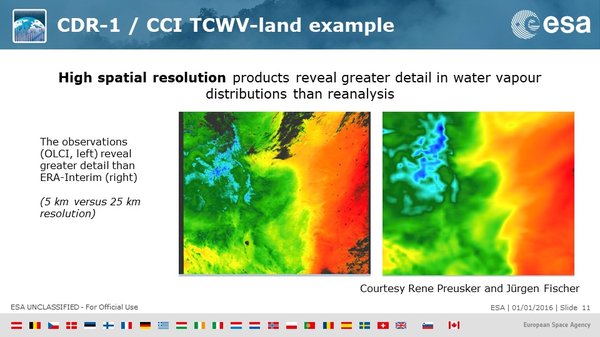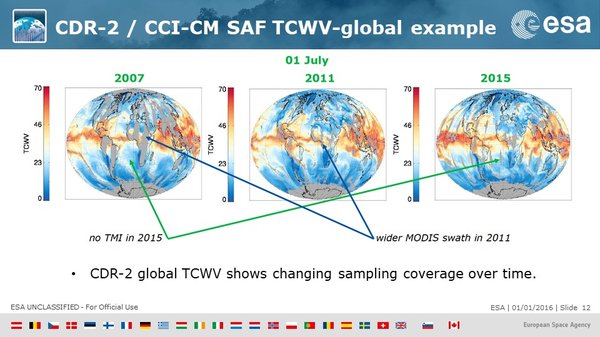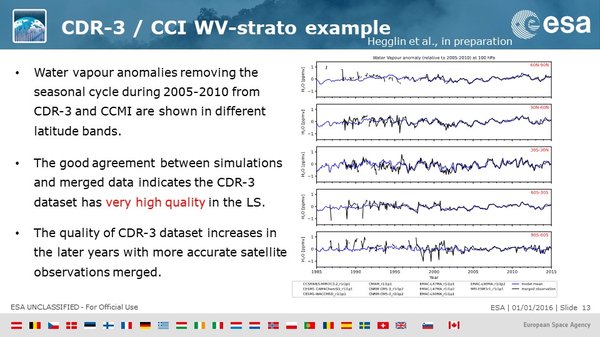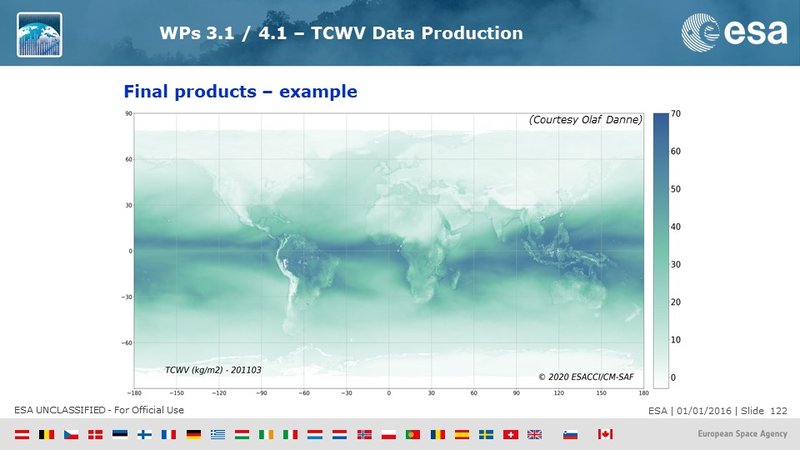The Water_Vapour_cci project has successfully completed Phase 1 and now enters into its Phase 2, a 3-year extension that will allow for the continued development of four atmospheric water vapour Climate Data Records in line with requirements of the GCOS Water Vapour Essential Climate Variable
Phase 1 closed with many achievements:
- User requirements for water vapour were assembled, based on climate community feedback.
- New algorithms were developed for both water vapour retrievals and data merging.
- Uncertainty characterisation of water vapour climate data records was improved.
- Input and merged datasets were extensively validated against various reference datasets, e.g. chemistry–climate models, global climate models, Numerical Weather Prediction models, in situ and remote observations.
- Four CDRs were generated:
- Three published (or soon-to-be-published) datasets:
- CCI TCWV-land (CDR-1) 2002–2017
- CM-SAF/CCI TCWV-global (COMBI; CDR-2) 2002–2017
- CCI WV-strato (CDR-3) 1985–2019
- One prototype dataset (available upon request):
- CCI WV-UTLS (CDR-4) 2010–2014
- Three published (or soon-to-be-published) datasets:
- Three user case studies were carried out: CMIP6-model comparison by UVSQ, SWOOSH-comparison by BIRA-IASB, ERA5-comparison on atmospheric rivers by University of Vigo.
- Five papers were published, three are in preparation, there will be at least two additional papers; many oral and poster presentations at international conferences and workshops were given.
- Extensive project documentation was published.
Some details from each of the CDRs are given below.





Building on the success of Water_Vapour_cci Phase 1, the objectives for Phase 2 are:
- Extending currently available CDRs spatially and temporally (both forward and backward in time) by consideration of new instruments.
- Improving the quality of the CDRs.
- Working towards GCOS requirements, within the limitations of available observing systems.
- Validation of CDRs against multiple reference datasets, including model output.
- Improving on uncertainty quantification, in order to make CDRs more useful to end users.
- Analysing variability and trends, and understanding drivers and impacts.
- Connecting to end users through early involvement in the definition of user requirements.
- There will be extended validation and four user case studies.
While there are scientific and technical challenges ahead, the Consortium are very pleased to aim to meet those challenges over the next three years.
New Partner for Phase 2
The project welcomes Christian Rolf and his team from the Forschungszentrum Jülich, who join the Water_Vapour_cci consortium to work as part of the Validation group, focusing on validation of Vertical WV data using airborne in situ measurements from IAGOS and JULIA.

